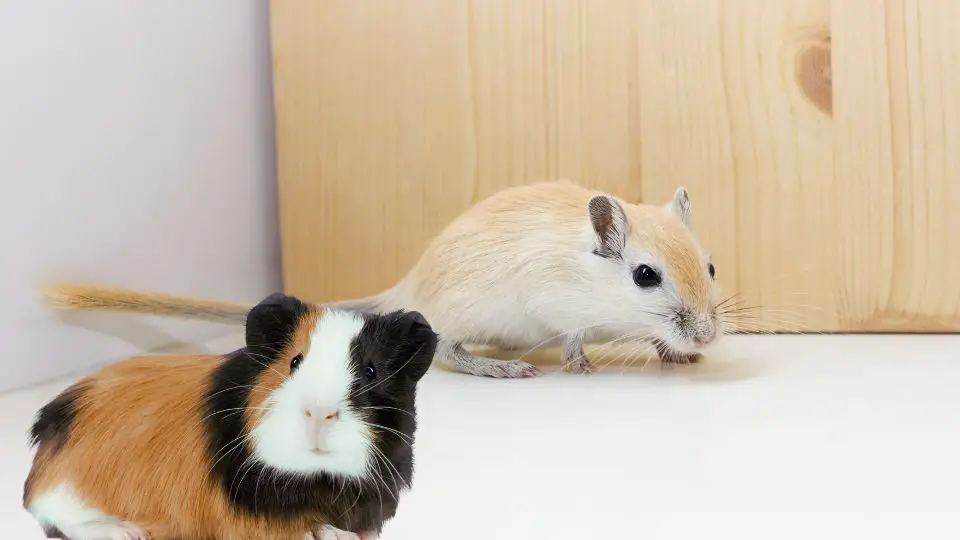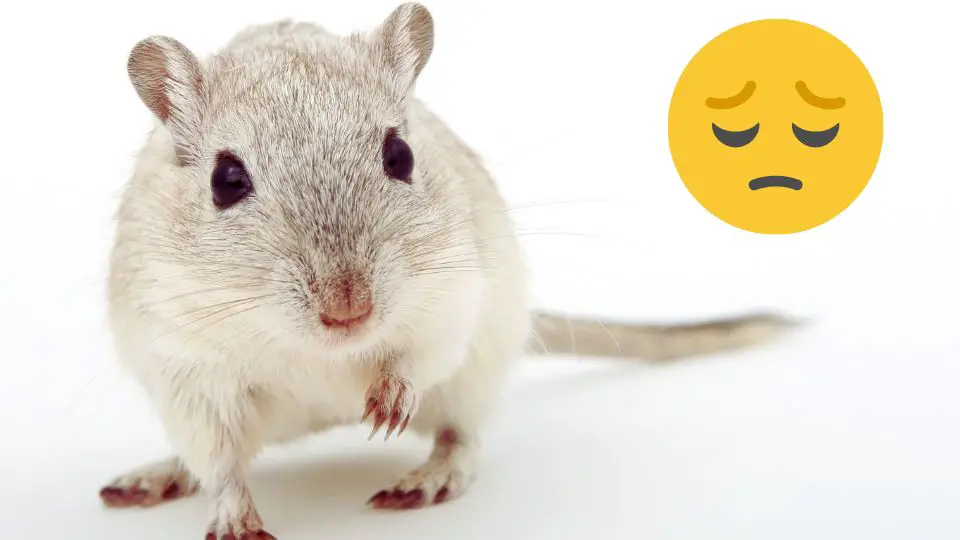Are you looking to engage and entertain your gerbil while strengthening your bond with them? Teaching tricks to your gerbil can be a fun and rewarding experience for both of you.
Gerbils are intelligent and curious animals, capable of learning a variety of tricks and behaviors.
In this article, we will explore the exciting world of gerbil training and discover what tricks you can teach your furry friend.
Tricks for Gerbil Training
Gerbils are intelligent and curious creatures, making them capable of learning various tricks and commands. Training your gerbil not only provides mental stimulation but also strengthens the bond between you and your furry friend. Here are some tricks you can train your gerbil:
Teaching “Come” or Recall Command
The “Come” or Recall command is a fundamental trick that helps you call your gerbil back to you on command. It is essential for ensuring their safety and allowing them to explore within boundaries. Here’s a step-by-step guide:
- Start in a quiet and familiar space. Hold a treat or favorite food item in your hand.
- Say your gerbil’s name followed by the command “Come” in a cheerful and encouraging tone.
- Show the treat to your gerbil and gently tap the ground near you to get their attention.
- When your gerbil comes towards you, reward them with the treat and praise them with positive reinforcement, such as verbal cues like “Good job!” or gentle petting.
- Practice the command in short sessions, gradually increasing the distance between you and your gerbil.
Training for Agility and Obstacle Courses
Gerbils are naturally agile and love to explore their surroundings. Setting up an agility course can provide mental and physical stimulation. Here’s how to train your gerbil for agility and obstacle courses:
- Create a mini agility course using tunnels, ramps, and small hurdles made from safe materials like cardboard or plastic.
- Encourage your gerbil to navigate through the course by placing treats at various points.
- Guide your gerbil through the course using verbal cues and hand gestures, rewarding them with treats and praise for completing each obstacle.
- Gradually increase the difficulty of the course as your gerbil becomes more confident and skilled.
Teaching Tricks like “Spin” or “Stand”
Gerbils can learn fun tricks like spinning in a circle or standing on their hind legs. Here’s how to teach them:
- For the “Spin” trick, hold a treat near your gerbil’s nose and move it in a circular motion. As they follow the treat, they will naturally spin around.
- For the “Stand” trick, hold a treat slightly above your gerbil’s head. As they reach up to get the treat, they will naturally stand on their hind legs.
- Practice these tricks in short sessions, repeating the cues and rewarding with treats each time.
Using Clicker Training
Clicker training is based on the principles of positive reinforcement, where desired behaviors are rewarded with treats and praise. The clicker serves as a precise and consistent marker to indicate the exact moment the gerbil performs the desired behavior. It helps in capturing and shaping behaviors, making the training process more efficient and enjoyable for both the gerbil and the owner.
Step-by-Step Process for Clicker Training Gerbils
- Familiarize Your Gerbil with the Clicker: Start by associating the clicker sound with rewards. Click the clicker and immediately offer a treat to your gerbil. Repeat this several times, ensuring your gerbil understands that the clicker sound predicts a reward.
- Define the Target Behavior: Decide on the specific behavior you want to train your gerbil. It can be something simple, like touching a target stick or going through a hoop.
- Capture and Mark the Behavior: Wait for your gerbil to naturally exhibit the desired behavior. As soon as they perform the behavior, immediately click the clicker to mark the moment, and then promptly offer a treat.
- Repeat and Reinforce: Repeat the process several times, clicking and treating each time your gerbil performs the desired behavior. Consistency and timing are key to help your gerbil understand which behavior is being reinforced.
- Add a Verbal Cue: Once your gerbil consistently performs the desired behavior upon hearing the clicker, you can introduce a verbal cue, such as “Touch” or “Hoop.” Say the cue just before your gerbil performs the behavior, and then click and treat as usual.
- Shape and Refine the Behavior: Gradually shape and refine the behavior by requiring more precise or advanced actions. Click and treat for small steps toward the final behavior, gradually raising your criteria.
- Generalize the Behavior: Practice the trained behavior in different environments and with distractions to help your gerbil generalize the behavior. Reinforce the behavior in various settings to ensure consistency.
Enjoy the Training Process
Training sessions serve as valuable bonding time with your gerbil. The time spent together, focused on positive interactions and learning, helps foster trust and deepen your connection.
Engage in training with patience, kindness, and respect for your gerbil’s individual personality and abilities. This will create a positive association with training and further strengthen your bond.
Celebrate Achievements
Each milestone and achievement in your gerbil’s training journey should be celebrated. Whether it’s successfully learning a new trick or mastering a behavior, take the time to acknowledge and praise your gerbil’s efforts.
Use positive reinforcement, such as treats, verbal praise, or gentle petting, to express your appreciation. Celebrating achievements not only motivates your gerbil but also reinforces the positive experience of training.
Enjoy the Learning Experience
Training is not only about the end result but also about the process itself. Embrace the joy of learning together with your gerbil. Stay patient, be present in the moment, and appreciate the small progress made during each training session.
Enjoy the curiosity and enthusiasm that your gerbil brings to the training process, and be open to adapting your methods based on their individual needs and preferences.
Make Training Fun
Inject fun and playfulness into your training sessions. Gerbils are naturally curious and active animals, so incorporate interactive toys, tunnels, or small obstacles to make the training environment engaging. Keep training sessions short and enjoyable to prevent boredom or frustration for both you and your gerbil.
Conclusion
Teaching tricks to your gerbil opens up a world of possibilities for mental stimulation, exercise, and bonding. Remember to be patient, use positive reinforcement, and always prioritize your gerbil’s well-being and comfort. With time, consistency, and a loving approach, you can witness the joy and satisfaction of your gerbil mastering new tricks and behaviors.
So, grab some treats, get ready to have fun, and embark on this wonderful journey of teaching your gerbil tricks that will impress and delight both you and your furry friend.







